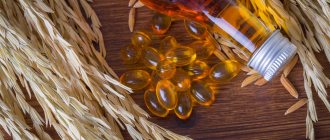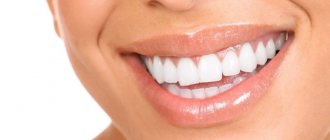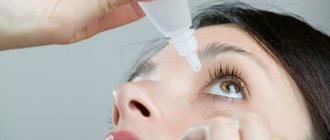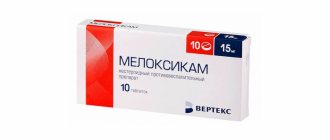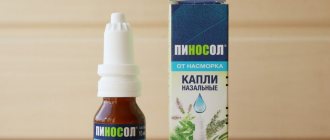- Method of administration: seeds
Method of administration: flour
Where is a large amount of useful substances and healing power for the digestive organs? What will help in the treatment of wounds, ulcers, eczema and burns? For those who understand herbs and various plant parts, the answer is probably obvious. And we will remind you and tell everyone more about this miracle remedy. We'll talk about milk thistle.
Peculiarities
Milk thistle oil is a unique natural product in its composition. It has a huge range of healing properties. In addition, it is important that the product has a minimum number of contraindications. Milk thistle oil is most often used as a hepaprotective agent. In addition, it strengthens the body’s defenses against various external negative factors.
Milk thistle oil has a yellowish-green hue. The natural product has a pleasant taste and smell. The benefits of milk thistle oil are associated with its rich composition. The product contains flavonoids of the silymarin group. These substances have a beneficial effect on the functioning of the liver, promoting the renewal and restoration of its cells. Silymarin reduces the risk of liver damage from toxic substances.
In addition, milk thistle oil contains all existing fat-soluble vitamins. This:
- Vitamin D, which promotes the absorption of phosphorus and calcium, and also strengthens the immune system.
- Vitamin K, which regulates blood clotting.
- Tocopherols that protect the body from the action of free radicals and support the proper functioning of the reproductive and cardiovascular systems.
- Carotenoids that ensure growth, support vision function and normalize metabolism.
The important components of milk thistle oil are:
- B vitamins. They are involved in many processes in the human body, in particular they contribute to the synthesis of hemoglobin. In addition, these substances normalize the functioning of the nervous system.
- Unsaturated fatty acids. These substances prevent the development of strokes and heart attacks and minimize the risks of atherosclerosis.
Milk thistle oil contains compounds of minerals important for the body, in particular zinc, selenium, magnesium, etc. They are important for the correct functioning of various processes, and maintain internal organs and systems in good condition.
List of foods prohibited for consumption in case of liver cancer
The diet for liver metastases excludes the consumption of foods such as:
- pork, fatty beef;
- any products containing preservatives, food additives, chemical flavor enhancers;
- white bread, pastries, any sweets, sugar and sugar substitutes;
- canned food;
- butter;
- various marinades;
- alcoholic and low-alcohol drinks;
- coffee, strong tea, mineral water, sweet carbonated drinks.
This does not mean that a person suffering from cancer should deny himself everything tasty. For example, sugar can be replaced with a natural sweetener - honey, and instead of strong black tea, a diet for liver metastases allows you to drink a cup of relaxing herbal tea.
Indications
The scope of indications for the use of milk thistle oil is extremely wide. This is due to the wide variety of beneficial effects of the natural product. It has a restorative effect and normalizes metabolism. The product is prescribed as a source of polyunsaturated acids and vitamin E. Thanks to its intake, health improves.
The hepatoprotective properties of the natural product make it possible to recommend it for various liver diseases. In particular, the effectiveness of dietary supplements for cirrhosis has been proven. Milk thistle oil normalizes the condition of fatty liver degeneration and inflammation of the organ of various origins.
Milk thistle oil in capsules is indicated for the complex treatment of various gastrointestinal diseases. The drug is used in the treatment of gastritis in any phase. Also, thanks to it, it is possible to enhance the effect of treating stomach and duodenal ulcers.
Taking a dietary supplement is also indicated in the following cases:
- With decreased performance and increased weakness.
- During stressful situations.
- For the prevention of atherosclerosis and other cardiovascular pathologies.
- For inflammatory processes in joints and bones.
- During treatment with antibacterial drugs and chemotherapy.
- In case of intoxication.
Treatment of atopic dermatitis
Atopic dermatitis is a chronic dermatological disease, which is characterized by inflammation of the surface layer of the epidermis, severe itching, dryness and the presence of specific rashes. This disease is detected in a person’s infancy, after which it accompanies him throughout his life. During its course, periods of improvement are replaced by exacerbations. The disease not only affects the general health of a person, but also leads to aesthetic and psychological problems. Regular skin rashes, itching and extreme dryness create discomfort, which interferes with normal life. Very often, dermatological problems affect the psycho-emotional state of the patient. Typically, such people withdraw into themselves, find it difficult to make contact with outsiders, are mostly depressed, and suffer from insomnia and other nervous disorders. It is impossible to completely cure it, but with the help of complex therapy the condition can be improved.
SPECIFICITY OF THE DISEASE IN CHILDREN In a newborn under the age of three months, a dermatological disease manifests itself primarily by external symptoms on the skin. Any changes in the state of the epidermis are characterized by the following stages:
- exudation - the release of natural fluid containing protein and other cells onto the surface of the skin;
- the formation of “serous wells” - weeping affected areas of the epidermis, which independently open and lead to the leakage of purulent contents to the surface. Usually, with strong scratching, such erosive formations can turn into a huge wound;
- the appearance of crusts;
- exfoliation of cells.
They appear mainly on the skin of the face (with the exception of the nasolabial area), on the elbows and knees. Itching of the skin can be very severe, which leads to anxiety and tearfulness in the baby. And scratching wounds aggravates the course of the dermatological disease, which leads to sleep disturbances and other neurological problems.
ATOPIC DERMATITIS IN A TEENS For a child in adolescence, this form of dermatological disease is characterized by the formation of large, painful papules. The upper layers of the epidermis are thick, the pattern of blood vessels is enhanced, and pigmentation is clearly impaired. When scratching and mechanical impact on the skin, hemorrhagic crusts appear mainly in the area around the eyes, corners of the mouth, chest, hands, elbows and knees. The teenager has a stable form of light dermographism of the skin. Treatment at this stage is prescribed to each patient individually by a qualified specialist.
ATOPIC DERMATITIS IN MATURE PATIENTS Therapy for this skin disease in adults has its own specifics. It usually goes away after puberty. If this does not happen, then it remains with the person for the rest of his life. In medical practice, cases of self-healing of the disease in a child during the period of active growth have been recorded. However, increased sensitivity of the skin may persist.
The disease in an adult combines all of the above symptoms. The surface layer of the epidermis is very dry, the pattern of the vascular network is strongly pronounced, and the pigmentation is clearly changed. Severe scratching of the skin can cause an infection, which often aggravates the course of the disease. Periods of exacerbation and improvement of the patient's condition follow each other at certain intervals.
APPEARANCE OF COMPLICATIONS DURING THE PROCESS OF ATOPIC DERMATITIS Basically, all complications in this disease are associated with mechanical damage to the surface layer of the epidermis, as a result of which any infection can be introduced inside. When the skin is damaged, the immune system also decreases, and this is a favorable environment for the proliferation of pathogens. All these factors together significantly complicate the treatment of the disease.
The most common complications of atopy are bacterial. When bacteria penetrate into the damaged area, a purulent lesion - pyoderma - can develop. The causative agents of this dermatological disease are pyogenic cocci, including streptococci, gonococci, and staphylococci. Popular symptoms of this disease are purulent rashes on the skin of the body and face. When dried, they form yellow crusts. Other signs of pyoderma include extreme fatigue, weakness, and fever.
In addition to bacterial complications, various viral lesions are often associated with atopic dermatitis. With them, various rashes appear on the skin, including vesicles (formations with a clear liquid). Mostly viral lesions are observed in the facial skin and mucous membranes.
Another common complication of this type of dermatitis, which is typical for childhood, is fungal infection. Very often, infants develop thrush, the causative agent of which is the Candida fungus. Dermatitis in mature people, which is associated with a fungus, manifests itself with various signs, including the formation of plaque in the skin folds.
REASONS FOR ATOPIC DERMATITIS How to cure atopic dermatitis? To do this, it is important to identify its root cause. As medical practice shows, it can be caused by a combination of external and internal factors. This dermatological disease is one of the genetically determined ones, so parents who suffer from it very often have children with similar symptoms. Doctors have confirmed that almost 50% of patients whose relatives have had cases of atopic dermatitis have a predisposition to various allergic reactions. In the case where both parents of a child are susceptible to atopic dermatitis, the probability of having a child with a similar dermatological disease is about 80 percent.
Genetic predisposition and the presence of this disease can be identified already in the first year of life. They usually manifest themselves in the form of a specific allergic reaction – inflammation and the appearance of rashes on the skin. Signs necessarily appear before 5-6 years of age. If allergies do not appear at school age, then parents with atopic dermatitis can be calm about the disease in their baby. However, sometimes symptoms of this disease can appear during adolescence. They can be aggravated by various factors, which include:
- decreased immune system;
- unfavorable environmental conditions;
- climate – high temperature or humidity;
- unbalanced diet;
- lack of vitamins and iron;
- infections;
- psychological factors and others.
Basically, this type of dermatitis is accompanied by other allergic diseases - rhinitis or bronchial asthma. It cannot be completely cured, but with the help of specific procedures and medications, the condition of the skin and quality of life can be significantly improved. With systematic implementation, remission can be achieved.
How to cure atopic dermatitis? To answer this difficult question, it is necessary to first analyze the classification. According to research by doctors, several of its forms can be distinguished - the stage of exacerbation, remission and the stage preceding the aggravation. It is called incomplete remission. Complete remission means the body is healthier and there are no symptoms. The forms of the disease are also classified depending on age - infant (from 1 to 3 years), childhood (from 4 to 12 years), youth (from 13 to 18 years) and adult (after 19 years) can be distinguished.
Also, depending on the severity of the symptoms of this disease, experts distinguish three different forms - mild, moderate and severe. This division is due to the duration of periods of deterioration, as well as the severity of clinical manifestations.
SIGNS OF ATOPIC DERMATITIS The first symptoms of this disease are in a child from birth to six months, but only if he has a tendency to allergic reactions. Doctors have determined that breastfed babies are less susceptible to allergies. Together with mother's milk, they receive antibodies that help the fragile body fight allergens. Also, the first signs may appear when introducing complementary foods, which usually begins at the age of six months, or when switching to an adapted milk formula.
During puberty, when active production of hormones occurs, in more than half of patients, all symptoms of atopy completely disappear. However, if they remain, they will cause discomfort for the rest of a person’s life. Typically, primary forms of atopy progress to adulthood, the symptoms of which are more pronounced.
According to the characteristics of the course of the disease, doctors distinguish two stages - acute and chronic. Each of them has its own symptoms and severity of clinical symptoms. In the first option, there is a change in shade in the affected areas, hyperemia and severe swelling. In some other cases, the course of the disease can be aggravated by numerous rashes in the form of nodules, erosive formations, dryness and increased peeling. The most characteristic sign of atopy is the release of natural fluid containing protein and other cells on the surface of the skin. This leads to the formation of weeping wounds and ulcers. With constant scratching of these formations, a viral or bacterial infection can join the dermatitis, which will lead to various complications and aggravate the course of the disease. The most dangerous of them are the appearance of papules and pustules.
The chronic form of this disease is characterized by thickening of the skin and the appearance of a noticeable pattern on it. It is also characterized by the following symptoms:
- numerous wrinkles in the lower eyelid area of the child;
- the skin on the feet is swollen with multiple small cracks;
- alopecia in the occipital area.
In mature people, other symptoms of the disease can be identified. A characteristic sign of this dermatological disease for different forms is severe itching. Other symptoms may vary depending on the person's age.
THERAPY OF ATOPIC DERMATITIS If signs of atopy have been detected in a child, adolescent or adult and the diagnosis has been confirmed, it is important to begin complex treatment in a timely manner. It is aimed at achieving certain objectives, including:
- removal of toxins and allergens from the body;
- reducing the severity of allergy symptoms;
- reducing the body's hypersensitivity to certain allergic substances;
- relief from severe itching;
- therapy for secondary infections;
- preventing exacerbation of the disease.
Atopy, the causes of which can vary depending on the age and health of the patient, cannot be completely cured. But drug and non-drug therapy can significantly alleviate the patient’s condition. To do this, it is important for the patient to follow all the specialist’s recommendations.
BALANCED NUTRITION IN ILLNESS To prevent relapse and alleviate the patient’s health during the period of exacerbation of the disease, it is necessary to choose the right diet. It should not include food products that contain a large number of allergens. You need to pay special attention to it when feeding infants, in which case all restrictions are imposed on the mother. It is necessary to exclude from her diet all foods to which the baby is hypersensitive. Typically these include dairy products and chicken eggs.
Also, the diet should not include fatty, fried and salty foods, smoked sausages, fish and meat with a high fat content, and highly colored foods. Also, you should not eat sweet foods, citrus fruits, nuts, as well as fish eggs and mushrooms, as they have a strong effect on the gastrointestinal tract.
When preparing food, the patient should reduce the amount of salt, and should not consume pickled and salty canned foods. To meet the need for nutrients found in some prohibited foods, you can take fat tablets. For more detailed information on creating a balanced diet, you should consult a nutritionist. He will be able to choose an individual nutrition plan.
DRUG TREATMENT OF ATOPIC DERMATITIS When treating this disease, the primary goal is to eliminate uncomfortable itching. It leads to constant scratching, which can cause infection of the affected area and lead to other more dangerous complications. To combat this unpleasant symptom of atopy, doctors prescribe special medications.
Antihistamines are good at eliminating itching of the skin, but also remove excessive swelling of the mucous membranes. This allows you to prevent common complications of dermatological disease. It is important to take into account that regular use of most of these drugs can cause the body to develop a lack of sensitivity to them in the future. This will cause the medication to stop working. To avoid this, experts recommend not taking antihistamines for more than a week. Also, many similar medications (Suprastin, Diazolin, as well as Tavigil and others) have a slight relaxing effect, which is important to take into account for those people whose work involves high attention.
There are several hormonal-based anti-allergy medications. Their intake is possible only for a short period of time with a gradual decrease in quantity. It is used only in the presence of severe itching, as well as in the absence of effect from the use of other drugs and medications.
If there are symptoms of intoxication, the doctor may prescribe additional intake of sorbent substances. They bind allergens and remove them from the body. Enterosorbents, which include charcoal, polysorb, enterosgel and others, are suitable for the child.
Intensive treatment of atopy is carried out when symptoms are severe using droppers to administer certain medications orally, including saline. In very difficult situations, blood purification may be prescribed. Depending on how you feel, this procedure is carried out every day or several times a week.
The use of special external preparations – ointments, creams, gels and other cosmetics – is important in the treatment of many dermatological diseases. Dermatologists often prescribe corticosteroids for therapy. The most common is Elidel. The main advantage of this medication is that it can be used to treat small children from birth to 3 months.
If there are weeping wounds and ulcers on the patient’s skin, they need to be dried. For this purpose, special cosmetic preparations are used. The selection of medications depends on the location of the lesions, the stage of the disease and the characteristics of the patient.
When a secondary viral or bacterial infection occurs, patients are prescribed antibacterial therapy. The selection of drugs in this case should be based on the results of tests carried out to determine the pathogen. A drug can be prescribed simultaneously with antibiotics to strengthen the immune system and prevent the development of intestinal dysbiosis.
Atopy therapy can only be prescribed by a qualified specialist after a thorough diagnosis of the patient’s condition. To achieve maximum effect, the treatment program is selected individually.
PREVENTION OF THE APPEARANCE OF ATOPIC DERMATITIS Therapy of this disease in people of mature age requires compliance with preventive measures. Today, this dermatological disease cannot be completely cured, since it occurs in the presence of factors that do not depend on the person. But with a competent approach to treatment, any patient can alleviate the course of the disease, improve well-being and reduce symptoms of exacerbation. To do this, it is important to avoid certain factors, which will prevent relapse.
All activities carried out as part of prevention can be divided into primary and secondary. The first group primarily includes careful management of a woman during preparation for childbirth. It is important to prevent the development of severe toxicosis and the use of potent medications. A pregnant woman should eat a balanced diet and avoid eating certain foods that can lead to allergies.
A newborn baby should be breastfed for as long as possible. It is not recommended to introduce complementary foods early and transfer the baby to an adapted milk formula. A nursing mother should also carefully monitor her diet and exclude highly allergenic foods from it, and be careful when consuming vegetables and fruits. You should not take strong medications during breastfeeding.
Secondary prevention measures are aimed at preventing exposure to external factors that provoke allergies. It is important to take care of your skin carefully and not use cosmetics that contain dangerous chemical dyes, fragrances and other aggressive ingredients.
You should also avoid wearing tight-fitting underwear, using hard washcloths and hot water. It is important to carry out comprehensive skin care, which includes hydration, nutrition and protection from adverse external factors.
Patients with atopy should carefully approach the choice of professional activity. It should not be associated with concentration and contact with chemicals, dust, and oils. You have the opportunity to make an appointment right now by filling out the online form on our website or by calling 91-80-70. Treatment of atopic dermatitis from 815 rubles
Contraindications and negative reactions
A contraindication for taking milk thistle oil is individual intolerance. But in practice this fact is rare. That is why it is generally accepted that there are no prohibitions on taking a natural product as a dietary supplement.
Milk thistle oil should be used with caution during pregnancy and lactation. This is due to the rich composition of the natural product. During critical periods, a woman should take a dietary supplement only after consulting a doctor. In particular, it can often be prescribed to prevent toxicosis during late pregnancy.
Due to the good tolerance of milk thistle oil, negative reactions due to its use are rarely observed. Sometimes hypersensitivity may cause allergic skin reactions. They manifest themselves as a rash with or without itching, redness and irritation of local areas of the skin.
Rarely, unpleasant disruptions in the digestive system may occur. They are associated with nausea with a gag reflex, abdominal pain, and excessive accumulation of gases in the intestines. Such symptoms are usually accompanied by headaches of varying intensity and localization.
Overdose has not been confirmed in practice. But theoretically, after taking a large number of capsules, the intensity of negative side effects may increase.
Products recommended for liver metastases
A diet for liver cancer with metastases involves consuming the following foods:
- any vegetables, except tomatoes, fruits;
- lean varieties of meat and fish (mostly sea);
- non-perishable milk, fresh fermented milk products;
- cereals, legumes (preferably not at night), nuts;
- bread made from wholemeal flour;
- olive oil;
- eggs – up to 3 pieces per week;
- freshly squeezed vegetable juices;
- moderate amount of low-fat cheese;
- sauerkraut in small quantities (to increase appetite).
Recommendations
The recommended dosage involves taking capsules three times a day. One-time quantity – 4 capsules. Taking milk thistle oil must be discussed with your doctor. The duration of the course is no longer than 2 months. After a break, you are allowed to repeat taking milk thistle oil capsules. However, it is not recommended to use the dietary supplement more than 3 times a year. If there is no positive effect when taking the product during the first weeks, then you should discard it.
Milk thistle oil should be stored at a temperature not exceeding 18°C in a dry place. It is important to exclude children from accessing dietary supplements. The shelf life of the natural product is 2 years. It is strictly prohibited to take expired medication.
Milk thistle medicine recipes
In folk medicine, there are many recipes for cleansing the liver of harmful substances. Each of them is aimed at preserving valuable plant substances. In addition, you can use time-tested drugs Karsil and Karsil Forte to treat the liver. They are also made with a milk thistle base.
Milk thistle powder
The production of powder from the fruits of the herb is done by grinding in a coffee grinder or blender. The product is also sold in pharmacies in finished form.
The powder is taken one teaspoon 30 minutes before meals three times a day, washed down with plenty of water (mineral water without gases is recommended for use; then the bottle is opened 12 hours before, thus releasing carbon dioxide).
Tea
Milk thistle tea is the most common and easiest way to use milk thistle to cleanse the liver.
To brew tea, take some leaves of the plant (you can take plant seeds instead). Brew the herb with a small amount of boiling water so that the water in the mug or glass makes up part of it. Peppermint and sugar can be added to tea for taste.
After this, the contents of the vessel should be left for half an hour. Later, the tea is filtered and should be drunk in the morning on an empty stomach. You should also drink liquid 30-40 minutes before bedtime to cleanse the liver faster.
Decoctions
This organ cleanser is made from milk thistle seeds. To do this, you need to take 40 g of seeds and grind them in any way. Pour the resulting powder into 0.5 liters of water and leave on fire. You need to cook until the original volume of liquid is reduced by half.
After cooking, the liquid is filtered. Take it one tablespoon once an hour. This liver treatment remedy needs to be brewed for 14 days.
How I bought Indian tablets
Now I catch myself thinking that I was lucky several times in this story. I was lucky to meet a competent hepatologist and lucky with the choice of the supplier’s website. After contacting me through the feedback form, my personal manager contacted me. She accompanied me promptly and competently until the very end of the transaction. In general, the organization of sales on our Russian side was a pleasant surprise.
First of all, in response to my application, I was introduced to the entire available range of medications with the active ingredient I needed. Since I had already initially decided with the doctor about the drug, I did not change anything and confirmed my order for three jars of Ladyhep. In response, they sent me payment details and an invoice - that’s what an invoice for payment is called in international commerce.
The intermediary offered five different generics of Harvoni, which varied slightly in price
This is what the payment details sent to me looked like:
Invoice for my order, the total cost of which was $740
With the invoice, I went to my bank and made a currency transfer. Then I sent a scan of the payment notification to the manager
My new generation drug. Source: LadyHep
I had to wait 12 days for confirmation of funds being credited. But the next day after confirmation, the parcel was sent immediately. I received a tracking code and waited another 12 days. In total, 27 days passed from the moment of application on the website to the moment of receipt of the shipment at the EMC point of issue.
I exhaled, decided to wait six days until the beginning of November, so that it would be easier to count the weeks, and start taking pills from the first.
- Normal pills?
Then I learned that three years ago the American company Gilead registered the first tablet form of a drug that directly affects the RNA of the hepatitis C virus and prevents it from being copied. This drug is called sofosbuvir. Combinations of this drug with later new products from the DAA line - direct-acting antiviral drugs - are by far the most effective means of treating hepatitis C. The cure rate is 95-97%, with virtually no side effects, and in tablet form!
This was great news. The bad thing is that a course of treatment with the original drug cost somewhere at the price level of a five-room apartment with European-quality renovation. But we were lucky. Gilead has licensed 11 Indian companies to produce generic drugs for the needs of poorer countries. Therefore, it was possible to purchase an analogue of the original drugs for quite reasonable money. The problem was that generics were not officially supplied to Russia, since our country was not considered the poorest. It was necessary to contact authorized trading companies in India directly and place the order privately.
How I learned about modern methods of treating hepatitis C
I would like to note that I went through all the tests and studies, as promised to the doctor, strictly. But everything that they did at the clinic - they took blood for biochemistry and performed an ultrasound - did not help in any way to assess how quickly my hepatitis was moving towards cirrhosis. Another safe and painless diagnostic method was fibroscan - ultrasound using a special device that determines the degree of fibrosis, that is, damage to liver tissue. If there is no access to a fibroscan, the only option left is a biopsy - a puncture in the liver with a special needle, which removes a piece of tissue for examination.
Fibroscan was found in a specialized gastroenterology center, and I went there. I paid about 2500 R and went through the research. I was diagnosed with the first, very initial stage of fibrosis. By luck, the result had to be taken from a local hepatologist. The young woman explained to me the essence of the research results and asked why I was not receiving treatment.
I immediately figured that they probably had their own paid program at the center. Well, I immediately briefly said everything I thought about interferon therapy. She wasn't embarrassed at all. I just asked why I don’t take normal pills.
How I was diagnosed
The local therapist immediately called an ambulance, which took me to the city infectious diseases hospital, to the ward with the same “fruits”. Then a blood test and diagnosis: viral hepatitis C.
I won’t say that the news about hepatitis shocked me. It just so happened: reckless youth in the dashing nineties. I couldn’t let the heroin wave pass me by - I got completely screwed. At that time, I had already had more than two years of “experience.” And although there was still money for a new syringe, the use of common utensils to prepare the potion for use occurred sporadically. Back then I couldn’t believe it was so dangerous. I still have no idea at what point I caught the virus. But if it’s through drugs, there’s no option.

